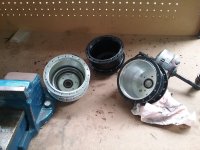Ykick
1 GW
I mentioned earlier I’ve run these clutches without any springs. Works fine 99% of the time but every once in a while it would’t lock up and I don’t like that.
My use of “thicker/heavier” springs has nothing to do with any desire for “stronger” springs. I just want something with thicker wire so it won’t get eaten by the roller so easily and cause erratic clutch problems.
My use of “thicker/heavier” springs has nothing to do with any desire for “stronger” springs. I just want something with thicker wire so it won’t get eaten by the roller so easily and cause erratic clutch problems.


